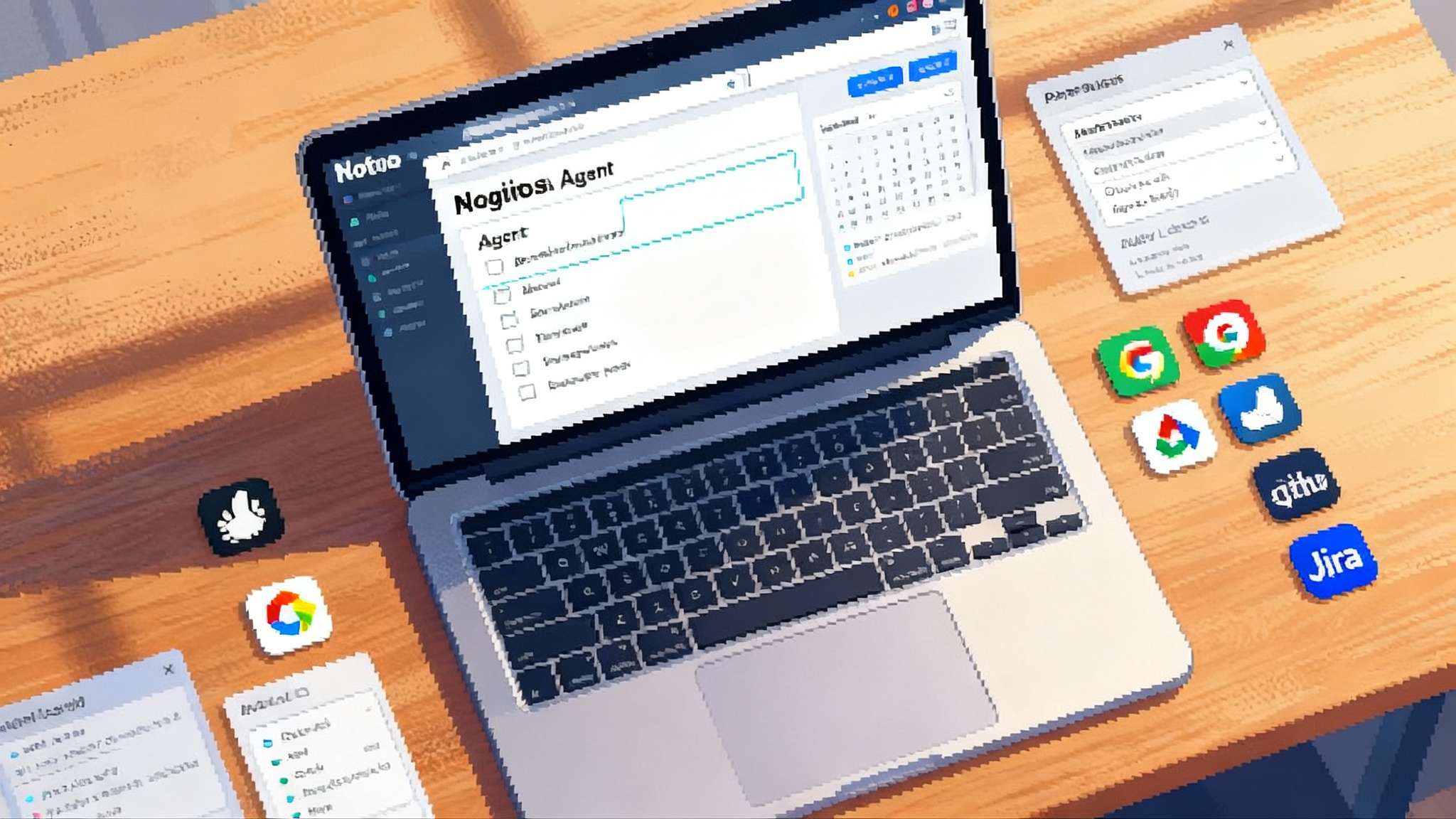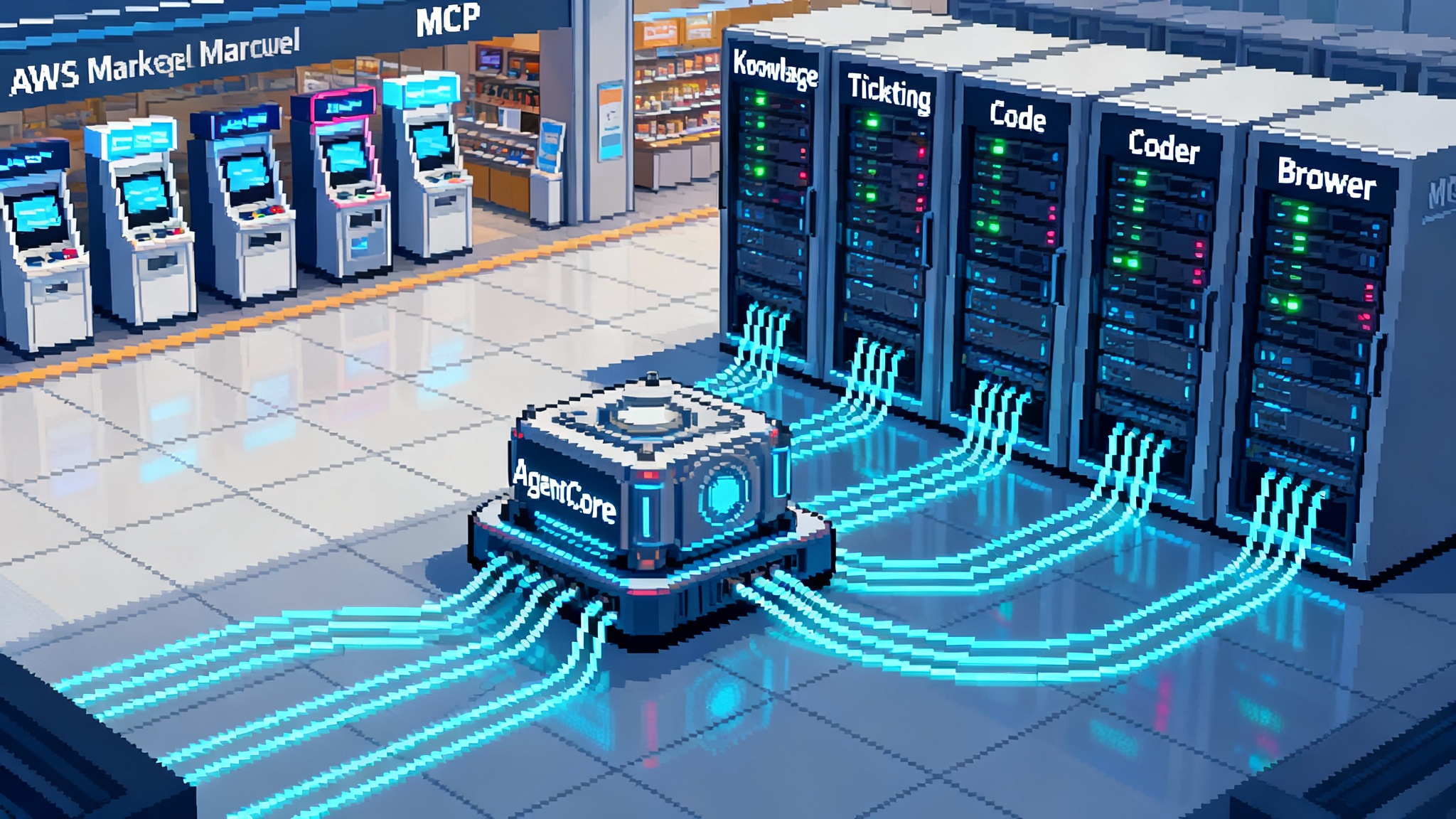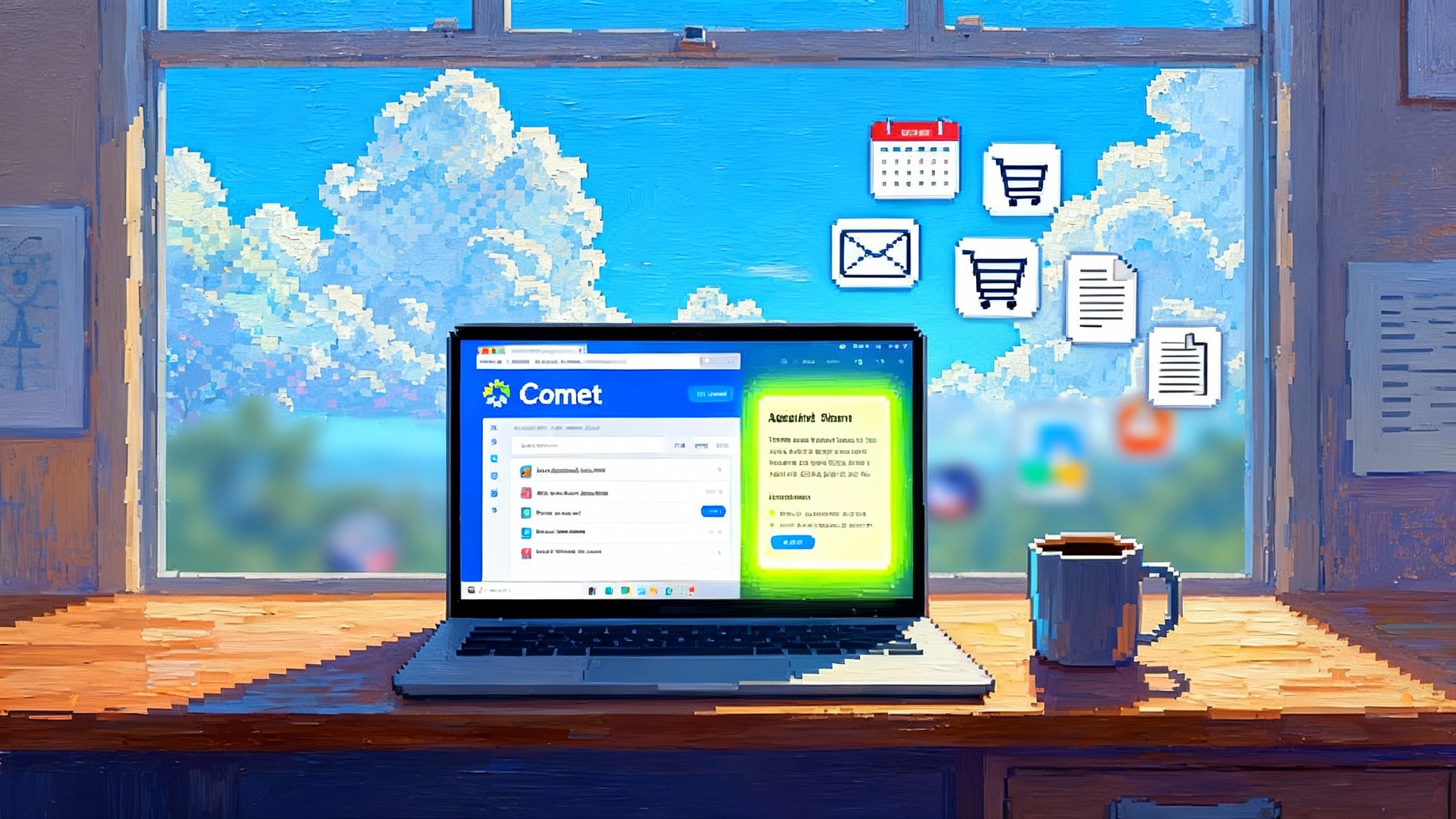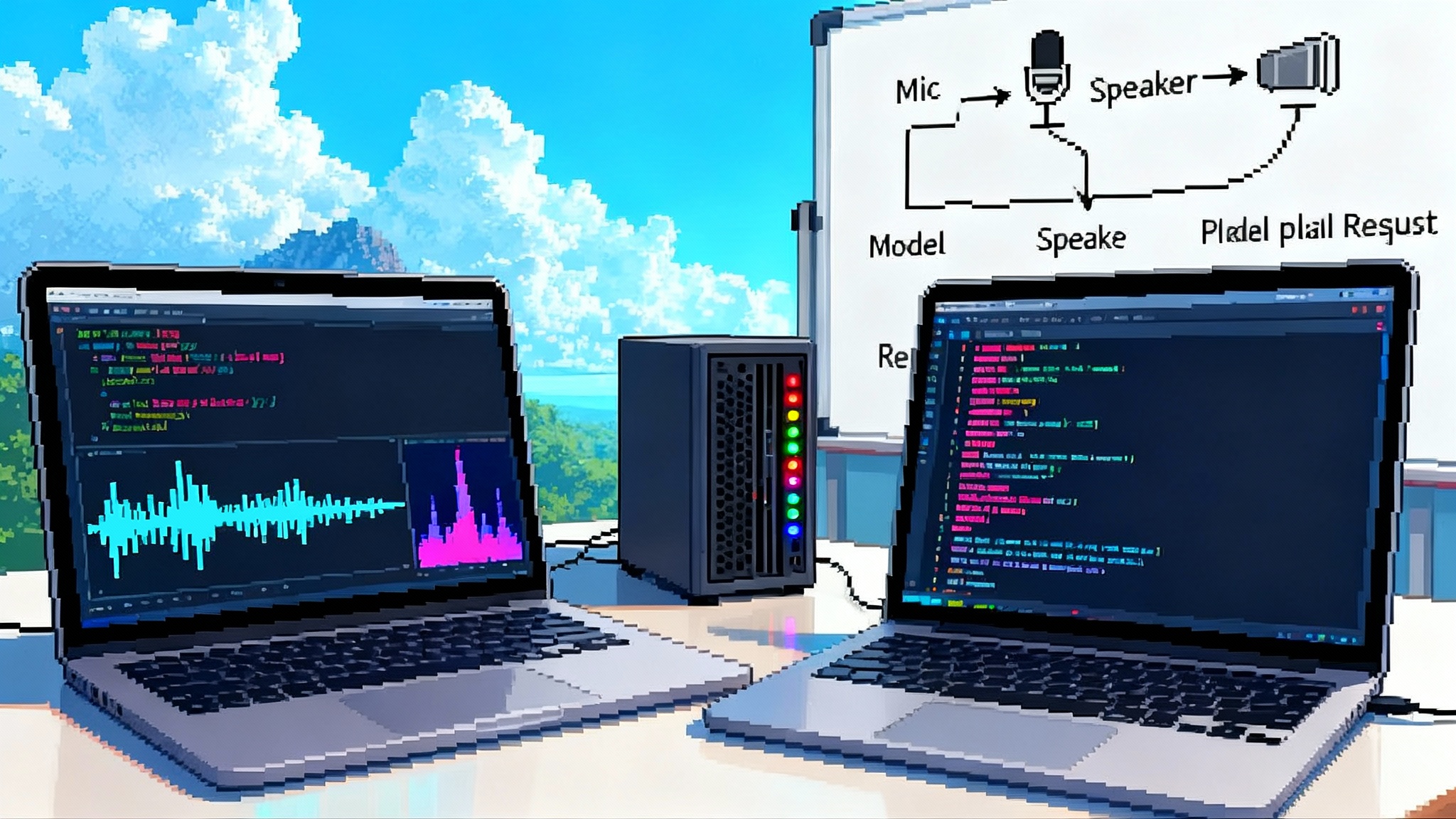Notion 3.0 Agents Turn Knowledge Workspaces Into Doers
Notion 3.0 introduces permission-aware, stateful agents that run for minutes at a time, remember your workspace, and connect to the tools your team uses. This guide shows how to ship real automations, deploy them safely, and measure business impact.

What changed with Notion 3.0 Agents
Notion 3.0 moves from knowledge storage to action. Agents can operate for sustained periods, respect workspace permissions, and work against structured data in databases. The payoff is fewer manual handoffs, faster cycles, and cleaner records.
Highlights
- Permission aware by default with role checks and auditability
- Stateful runs that can execute for minutes and revisit prior steps
- Native access to pages and databases for read and write
- Configurable tools and workflows to reach adjacent systems
For a broader industry backdrop, see how browser-native agents remove integration barriers in Gemini 2.5 browser agents break the API bottleneck and why enterprise stacks are converging in AWS AgentCore and MCP are unifying the enterprise AI stack.
Where Notion Agents fit in your stack
Think of Notion as the system of record for plans, decisions, and tasks. Agents sit inside that record and perform the high-friction work that keeps it current. They are best when:
- Input and output are already modeled in Notion databases
- The task benefits from memory across several steps
- The risk profile is manageable with least privilege and review
Agents are not ideal when you need millisecond latency, strict transactional guarantees, or complex cross-service orchestration that belongs in code.
A proven blueprint to go from demo to deployment
1) Frame the outcome and the metric
Define the job to be done, the success metric, and a hard guardrail. Examples:
- Triage inbound requests and create tickets with 95 percent correct routing
- Summarize meetings and create tasks within 10 minutes of calendar end
- Generate weekly status reports with less than 2 corrections per report
2) Map the data model first
Identify the Notion databases, required fields, and validation rules. Add status fields such as review_state, agent_confidence, and last_run_id. This reduces prompt complexity and improves reliability.
3) Design the permission model
Apply least privilege. Create a dedicated agent identity with scoped access to the minimal set of pages and databases. Require human review for writes above a risk threshold, for example budget changes or external email sends.
4) Write task-centric instructions
Keep prompts short and specific. Provide examples and counterexamples. Prefer schema over prose. For instance:
You are the Project Updater. When a meeting note is tagged with \"Actionable\", extract tasks with owner, due date, and priority. Write tasks to the Tasks database. If a due date is missing, set it to 3 business days. Never change fields outside Tasks.
5) Add run controls and observability
Instrument every run with start time, duration, tool calls, and deltas written. Log confidence scores and capture a replayable trace. Store a link to the run on the updated record for audit.
6) Ship with a canary and an owner
Start on a single team, label every agent-created change, and set a weekly review. Publish an escalation path for rollbacks. Assign a clear owner who will tune prompts, fields, and policies.
Three high-impact automations you can ship this week
A) Weekly status rollups from Tasks
- Trigger: Friday at 3 pm or when task statuses change
- Agent actions: Group tasks by owner and project, generate a brief summary, and post to a Status database page
- Guardrail: Require human review if more than 20 tasks are closed in a single rollup
- Metric: Time to ship the status update, edits per report
B) Support intake triage
- Trigger: New row in the Requests database
- Agent actions: Classify priority, detect product area, assign owner, and draft an acknowledgment comment
- Guardrail: Auto-assign only for low or medium priority; high priority requires a human
- Metric: Median time to first response, routing accuracy
C) Meeting notes to actionable tasks
- Trigger: Notes page tagged with the meeting template
- Agent actions: Extract decisions, tasks, and blockers, then write to Tasks with links back to the note
- Guardrail: Do not create tasks for speculative or future ideas tags
- Metric: Tasks created per meeting, completion rate by due date
Deployment and safety patterns
Permissioning
- Create one service account per agent and grant only the databases it needs
- Separate read from write databases where possible to reduce blast radius
- Mark agent writes with a
created_by_agentflag for search and cleanup
Validation
- Use database formulas and select fields to constrain inputs
- Require confirmation for destructive actions such as delete or archive
- Maintain a quarantine view where items wait for quick human approval
Review cadence
- Daily: Scan failures and high-risk changes
- Weekly: Tune prompts, field schemas, and confidence thresholds
- Monthly: Retire unused capabilities and rotate secrets
Measuring ROI without guesswork
Start with a baseline week. Ask humans to time their steps and count errors. After deployment, use the same measures.
Core metrics
- Cycle time from trigger to completed change
- Edits per agent-generated artifact within 48 hours
- Human minutes saved per item, multiplied by volume
- Error rates by category and severity
Simple ROI formula
ROI = (Hours saved × fully loaded hourly rate) − (build + run + review costs)
Track learning effects. Most agents improve after the first ten runs, then plateau. Revisit prompts and fields at those checkpoints.
How Notion Agents compare to general-purpose agents
- Embedded data context: Agents work near structured content, which simplifies grounding and reduces hallucinations
- Stronger access controls: Workspace permissions act as default guardrails
- Lower integration tax: Many workflows live entirely inside Notion databases
For a view of multi-model and SDK approaches beyond Notion, see our inventory of production patterns in From demos to deployments with Claude 4.5 and the Agent SDK.
Practical limits and how to work around them
- Long-running tasks may hit duration caps. Break work into checkpoints and requeue with a cursor field
- Non-Notion systems can require custom connectors. Mirror the minimal fields needed inside Notion, then sync the authoritative value back
- Approvals can bottleneck throughput. Batch approvals by risk level and auto-approve low-risk writes
Implementation checklist
- Define a narrow outcome and a measurable success metric
- Map the database schema and add guardrail fields
- Create a least-privilege agent identity and test reads before writes
- Write short, role-specific instructions with examples
- Instrument runs and expose a review dashboard
- Launch with a canary team and a weekly tuning loop
- Report ROI monthly and prune unused capabilities
FAQs
Do I need a developer to start? No. Start with database templates and low-risk write permissions, then graduate to tool integrations as needed.
How do I keep humans in the loop? Require review for specified states, and route high-risk items to an approval view. Use labels and filters so humans audit quickly.
What if the agent makes a mistake? Maintain a rollback view with the last known good state. For critical data, route writes to a staging database first.








